Kras and Studio Sonda Win Prestigious Award for Dorina Redesign
August the 27th, 2022 - The much loved Croatian chocolate brand, Kras, and Studio Sonda have won a prestigious award for their redesign of the Dorina chocolate packaging.
As Poslovni Dnevnik/Josipa Ban writes, product packaging, or the packaging that represents it, is an important and powerful tool of communication with customers. In the proverbial sea of products we're constantly swimming in, you need to stand out and attract attention. It isn't easy for new products that are just entering the market, and nor is it "old", well established brands that still have to follow market trends so as to not drown.
Kras has succeeded in one of its most famous brands, the famous Dorina chocolates. A powerful confirmation that the redesign, which was presented at the beginning of this year, came in the form of winning the Red Dot award, one of the most influential awards in the world of design.
A great help to Kras in the success of the new design was Studio Sonda from Vizinada in Istria, for which this is already the 17th Red Dot award. To speak more specifically, Kras and Studio Sonda won the main prize in the Brands&Communications Design and Packaging Design categories. The goal of this award is to evaluate the most ingenious design works, and their originality and creativity, design quality, innovation, and understanding and emotional reach to the audience were evaluated by 24 experts from all over the world.
"With this award, in addition to the positive reactions of our consumers, the profession also recognised the excellence of the new design. We're grateful to Studio Sonda for being able to turn our vision into a real product. This reward has put a spring in our step and provided us with the motivation to think about future novelties in Kras with even more attention and enthusiasm," said Marina Knezevic, the marketing director of Kras.
For more, make sure to check out our dedicated Made in Croatia section.
Fire in Slovenia Causing Thick Smoke in Istria, Croatia
July 21, 2022 - The fire in Slovenia is the worst in the country's history. A look at the latest updates and the impact it is having on Istria.
Overnight, 800 firefighters brought the biggest fire in Slovenian history under control. However, the situation is still difficult. Due to the wind, the fire is moving from Italy towards Slovenia.
Latest updates from Index.hr:
Minister of Defense: The situation has worsened in the last few hours
"In the last few hours, the situation has worsened; extinguishing fires from the air is greatly hampered by poor visibility. The headquarters determines measures depending on the development of the fire. Three settlements have been evacuated: Novelo, Temnica, and Vojščica. At the moment, our main task is protecting buildings," the Minister of Defense Marjan Šarec announced on Twitter.
According to the locals, the fire has already approached Vojščica - about 300 meters, which can be seen from the increasingly thick smoke, soot, and ash, reports a 24ur journalist.
Helicopters from Austria, Croatia, and Slovakia arrive to help
It is expected that around 1,000 firefighters and several helicopters, including four Slovenian army and two police helicopters, will fight the fire. A helicopter from Austria is already putting out the fire, and Croatian and Slovak helicopters are also on the way.
The fire also threatens settlements in Italy
The fire is threatening the Slovenian Kras region and spreading to the Italian side. It threatens the inhabitants of the villages of Sablici, Jamiano, Medeazza, and Doberdo. Slovenian and Italian firefighters are trying to protect the mentioned locations.
At Medeazza, according to the head of Duino-Aurisina, Igor Gabrovec, the fire is only a kilometer away from the settlement. The highway in the direction of Trieste has reopened today, while the section in the direction of Venice is still closed.
Numerous explosions in the area of the fire, exploding devices from the First World War
A fire in the Kars area caused numerous explosions of devices that remained in that region from the First World War. Commander Darko Zonjič said they no longer count explosions but only mark them along roads so they can be recorded later.
"Even during the night, there were a lot of explosions due to high temperatures in the area affected by the fire. Yesterday, 18 different explosive devices were removed from the villages of Sela na Krasu and Korita," said Zonjič.
Civil protection headquarters: Three fires are currently active
The Slovenian Civil Protection Headquarters announced that three fires are currently active. Firefighters are most concerned about the fire in Klarići, a hamlet near the Italian border. More than 1,000 firefighters are on the ground.
Sirens sounded for the evacuation of residents
Evacuation sirens sounded in three villages in the Kras region; Temnica, Vojščica, and Novelo. The place for gathering citizens from those areas is the gymnasium in Komno, the Civil Protection HQ announced.
Civil Protection Commander: This is the biggest fire in the history of Slovenia
Civil Protection Commander Srečko Šestan said they had never had so many firefighters on the ground at night. Almost 1,300 people, including 1,000 firefighters, fought the fire during the day. When the fire began to threaten the houses, additional forces were called in. Šestan assessed that it was the biggest fire in Slovenia so far.
"At the moment, the situation is under control; there is no strong wind, which makes it easier to put out the fire because the fire does not spread. Of course, the situation can change quickly because a storm has been announced," wrote Defense Minister Marjan Šarec this morning, adding that he is participating in firefighting with the Slovenian army.
"Since yesterday, the army has been helping with water supply and accommodation, the military ambulance service has been called, and they will also inspect with a thermal camera to detect hidden hotspots. They will also provide meals for the troops on the ground. If necessary, we will also send soldiers," Šarec said.
A lot of smoke in Istria
"A good part of western Istria is still in smoke; the situation has even worsened. A lot of reports are coming from Poreč," writes Istramet.
After Canadairs, the Ministry of Defense sent a helicopter to the fire scene in Slovenia
During the day yesterday, the water cannon dumped 48 tons of water on the burned area in nine bursts.
Polluted air throughout Slovenia
The fire caused air pollution in the area of Koper, Postojna, and Nova Gorica.
Stronger winds are not expected
"We can look at wind as optimists or as pessimists," says Brane Gregorčič from the Environmental Protection Agency. He said that there really wouldn't be any stronger wind. He pointed out that the problems on Wednesday were caused by the western wind, which spread the fire from Italy towards Slovenia. "We expect similar winds today, but in between, there were about 18 hours of calm as far as the wind is concerned," he said.
Smoke in Istria
A large amount of smoke from the fire raging in the Slovenian Kars region covered Istria with thick smoke, bringing a significant deterioration in air quality, reports Istramet.
The station for measuring air quality in Žužići near Tinjan at 5:15 am recorded a significant increase in floating particles. During most of the night, PM 2.5 particles were below 10 micrograms per cubic meter of air, and after 5 hours, it increased more than three times and reached 40 μg/m3.
This morning, smoke in the form of haze is particularly visible in northern Istria, where there is a strong burning smell
For more breaking news in Croatia, follow TCN's dedicated page.
Much Loved Brand Kras Creates Chocolate with Croatian Cvarci
April the 30th, 2022 - It might sound like a very late April Fool's joke, and it in fact began its ''life'' as such, but the much loved Croatian chocolate brand, Kras, has seriously created a chocolate bar with Croatian cvarci (pork scratchings) inside it. Here's where you can purchase it.
As Poslovni Dnevnik writes, it all started out as an April Fool's joke from the company on social media, but Kras recently announced on its official Facebook profile that they really have created a bar of much loved Dorina chocolate, but with Croatian cvarci inside it.
They first mentioned this combination in terms of an April Fool’s joke, but, as they explained for N1, the interest from people who saw the joke was so great, and the questions about the chocolate bar so frequent, that they really decided to make a Croatian cvarci infused chocolate bar.
Anyone who wants to try this chocolate for themselves, or just wants to buy it to keep on the shelf as a bit of a joke, can do so as of today as Kras choco and cafe. You may have to get your skates on, however, as this weird and wonderful chocolate bar is a limited edition and when stocks are gone, they're gone.
For more, make sure to check out Made in Croatia.
Confectioner Kraš Reports 64% Increase in H1 Profit
ZAGREB, 28 July, 2021 - The Kraš confectionery group generated a net profit of HRK 21.9 million in the first half of 2021, an increase of HRK 8.6 million or 64.2% over the same period in 2020, according to its financial statement released on Wednesday.
Consolidated revenue reached HRK 488.2 million, up by HRK 30.4 million or 6.6%, with sales revenue totalling HRK 481.4 million. Sales revenue increased by 15.8% to HRK 257.7 million on the domestic market and by 9.1% to HRK 220 million on the foreign markets.
Expenditure increased by 4.2% to HRK 461.1 million.
(€1 = HRK 7.523368)
For more about business in Croatia, follow TCN's dedicated page.
Strongest Croatian Brands Survived and Succeeded After Independence
January 4, 2020 – A map showing production across the former Yugoslavia details the sustained prosperity of many Croatian favourites as some of the strongest Croatian brands are shown not only to have survived but have succeeded following independence
Media across Croatia, Bosnia and Serbia have surprised younger readers and reminded older readers with the publication of a map detailing production in the former Yugoslavia. While this trip down memory lane has caused a range of reactions across the countries of the former republic, looking at the map from a purely Croatian perspective gives some enlightening information. Namely, many of the strongest Croatian brands visible on the map are recognisable today. Some of the strongest Croatian brands not only survived independence but have since grown.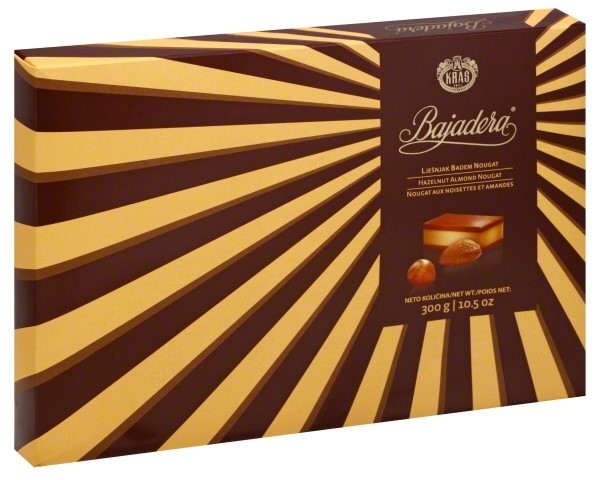
Bajadera - one of the most popular products made by Zagreb-based chocolate and confectionery manufacturers Kraš
Zagreb-based chocolate and confectionery manufacturers Kraš, Požega-based confectionery and drinks manufacturers Zvečevo, oil company INA, Koprivnica-based food company Podravka and Koprivnica-based pharmaceuticals company Belupo, vitamin drink Cedevita, Varaždin-based food company Vindija, Vukovar shoemakers Borovo, Varaždin clothes designers and manufacturers Varteks and multi-use condiment Vegeta are just some of the strongest Croatian brands that are present on the map. You are still likely to see these brand names on many Croatian high streets. Some have succeeded in reaching further into international markets since Croatian independence.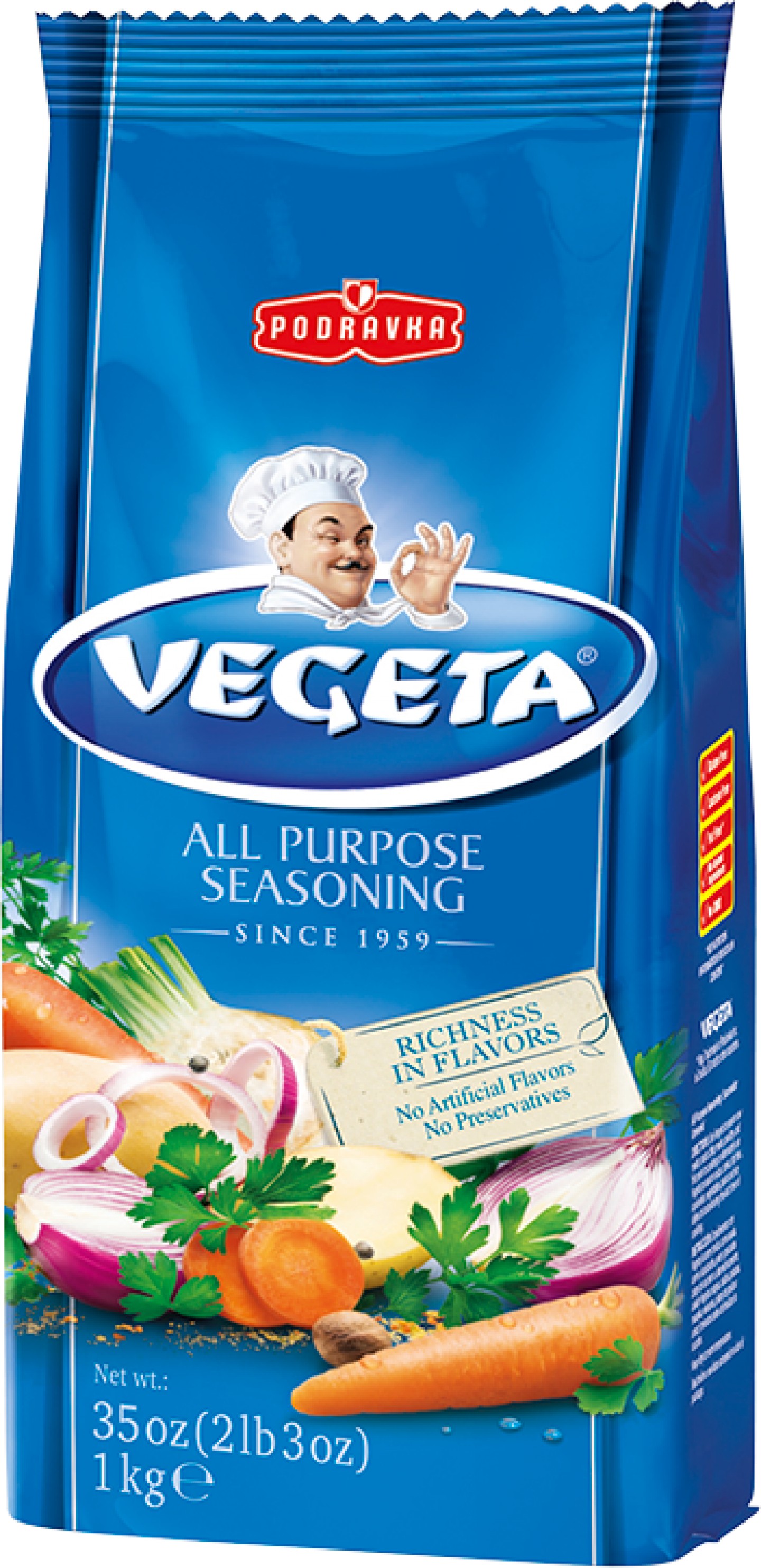 Croatian-made condiment Vegeta is sold all over the world
Croatian-made condiment Vegeta is sold all over the world
Of course, not every brand visible on the map of Yugoslavia production has fared so well. In their coverage of the map, Ri.portal reminds that “Some of the Yugoslav products were used by literally the whole world - ships, cars, planes, trucks, weapons and even computers were produced... However, many of these companies no longer exist or are bankrupt.”
In their coverage of the map, Bosnian website Klix reminds that Croatian shipyards Uljanik in Pula and 3 Maj in Rijeka were at world level and produced large ships for customers from all over the world. Split-based shipyard Brodosplit, which can also be seen on the map, survives to this day.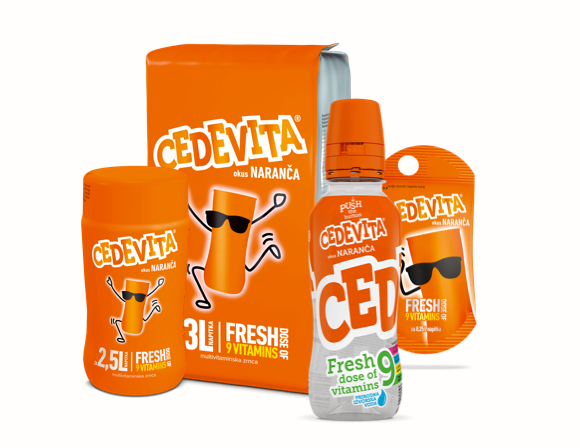
Croatian vitamin drink Cedevita comes in a range of flavours
Ri.portal goes on to remember that Yugoslavia was one of only five countries in Europe at the time that manufactured its own computers. “Probably the most famous is the Galaxy, while the first computer produced was the CER-10,” they say. One of the Yugoslav computer makers on the map, popular in the late 1970s, was Digitron, based in Buje in Istria.
Sadly, not all of the strongest Croatian brands have made it until today. Famous tractor and agriculture equipment manufacturer Tomo Vinković of Bjelovar is no longer in production. Their famously-reliable machines are much in-demand on the secondhand market. Two new tractor manufacturers, Hittner doo and the Prima tractor factory still make tractors in Bjelovar.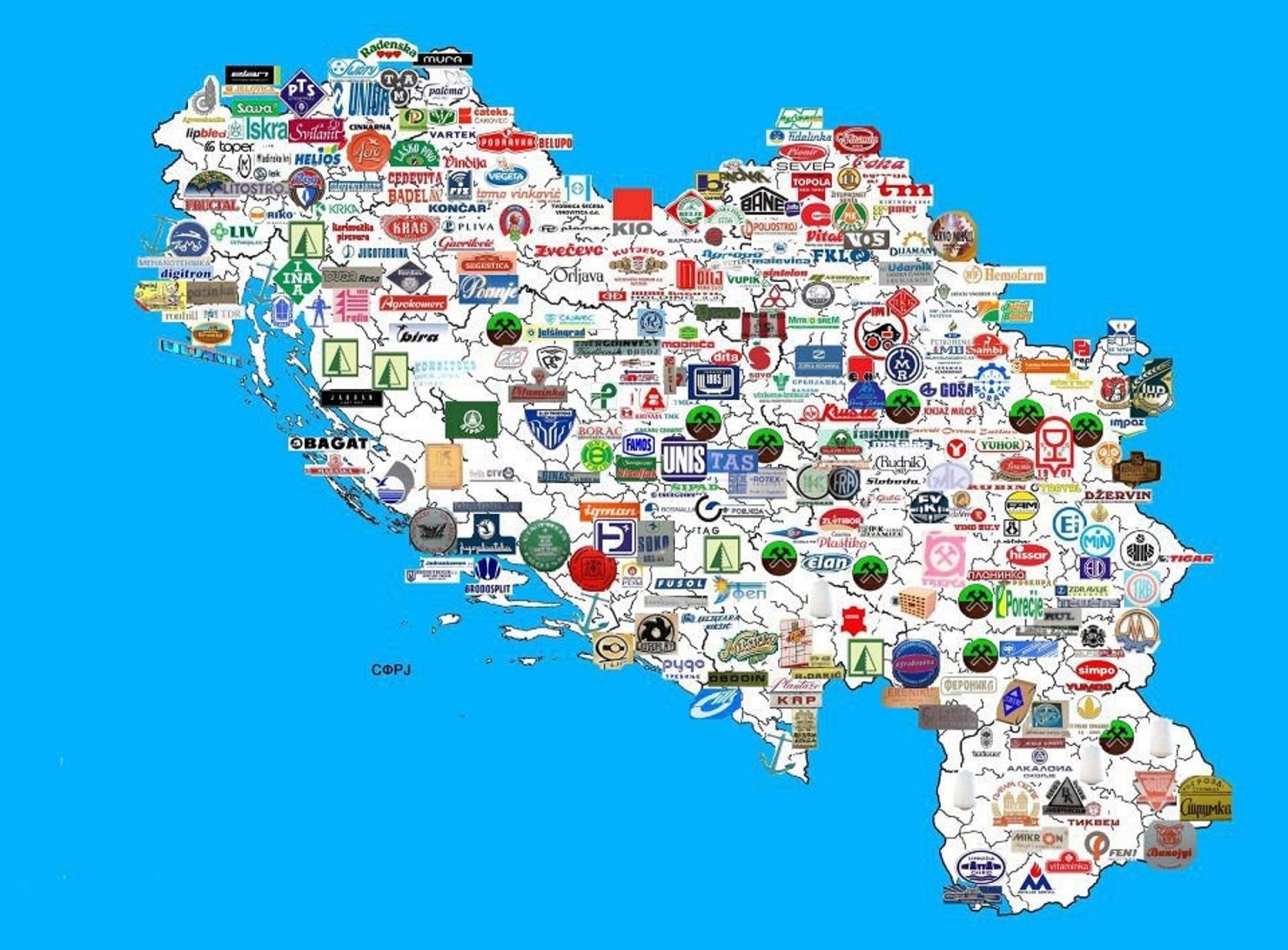
The Country's Biggest Export... Croatian Chocolate!?!
November 4, 2020 - Olive groves and vineyards are iconic elements of the vista on the Croatian coast. They appear frequently, as does the international recognition for the wine and olive oil they produce. This makes it all the more surprising to learn that the country's biggest export is, in fact, Croatian chocolate.
On 4 November 2020, 24 Sata reported the surprising statistics about Croatian chocolate. Their sources are agricultural and food product reports from 2018 and 2019, made by the Croatian Chamber of Commerce. They state that Croatian chocolate and cocoa products were at the top of the export rankings. Croatia wine and Croatia olive oil didn't even get a look-in the top five Croatian exports – the next biggest were corn, tobacco products and then fresh and frozen fish. © Alexander Stein
© Alexander Stein
The production of wine and olive oil in Croatia goes back many thousands of years. The industry for making Croatian chocolate is a baby in comparison – Europeans only encountered cacao beans in the 16th century, while exploring and colonising the Americas. Still, the production of Croatian chocolate does have quite a history.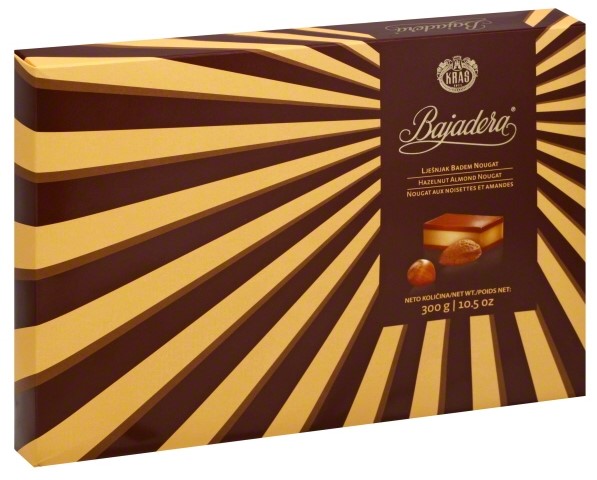
Bajadera by Zagreb's Kraš is one of the most popular boxes of Croatian chocolate to be given as a gift © Kraš
The oldest maker of Croatian chocolate is Zagreb's Kraš. The company's roots lie in three confectioners from the early 20th century. Union is the oldest chocolate manufacturer in south-east Europe (just two years after its foundation in 1911 was awarded the title of supplier to the royal court in Vienna and Budapest), Karolina, a former flour mill which switched to making biscuits and waffles in 1921 and Bizjak, founded in 1923, which made cookies and wafers. These companies, along with a number of smaller Zagreb confectionery manufacturers were merged in 1950 under the name of Kraš, in honor of Josip Kraš, a Croatian union leader and anti-fascist who was killed in World War II. Their range today includes the bars Dorina and Animal Kingdom, boxed classic Bajadera, chocolate biscuits Domaćica and the wafer bars Napolitanke and Tortica. Kandit's classic Rum bar, made in Osijek. Hands-down the best ultra-cheap Croatian chocolate mini-snack bar © Kandit
Kandit's classic Rum bar, made in Osijek. Hands-down the best ultra-cheap Croatian chocolate mini-snack bar © Kandit
The second oldest company making Croatian chocolate is Kandit, which is today still based in Osijek where its parent company was established way back in 1905 as a sugar production outfit. It switched to making waffles, sweets and chocolates in the early 1920s. Its range today includes the kids' favourite Choco Banana and hands-down the best ultra-cheap Croatian chocolate mini-snack bar Rum. It's a classic. Keeping on-trend, the relatively recent No Guilt series of high-quality, no-sugar chocolate bars has made a great addition to Kandit's offer. This range is the only Croatian chocolate currently recommended by the country's diabetic association.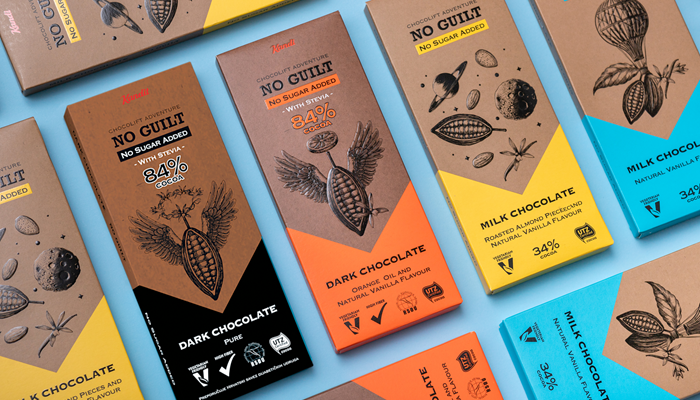 Kandit's No Guilt range has no added sugar and several bars with a high cacao content © Kandit
Kandit's No Guilt range has no added sugar and several bars with a high cacao content © Kandit
The third big player in the Croatian chocolate scene is Zvečevo, from Požega. The company traces its roots back to 1921, but its association with chocolate only really began in 1934 when Swiss company Nestle began to manufacture there (the association continued until 1995). Zvečevo is notable as having invented the combination of toasted rice and milk chocolate in a bar. Now considered a classics pairing across the world, it was first produced in 1964 in Požega under the name of the Mikado bar. As well as still making this classic of Croatian chocolate, Zvečevo now makes a dark chocolate version, chocolate for use in home cooking and a popular range of strong alcoholic drinks. It has won several awards for its ethical and eco-friendly business practices.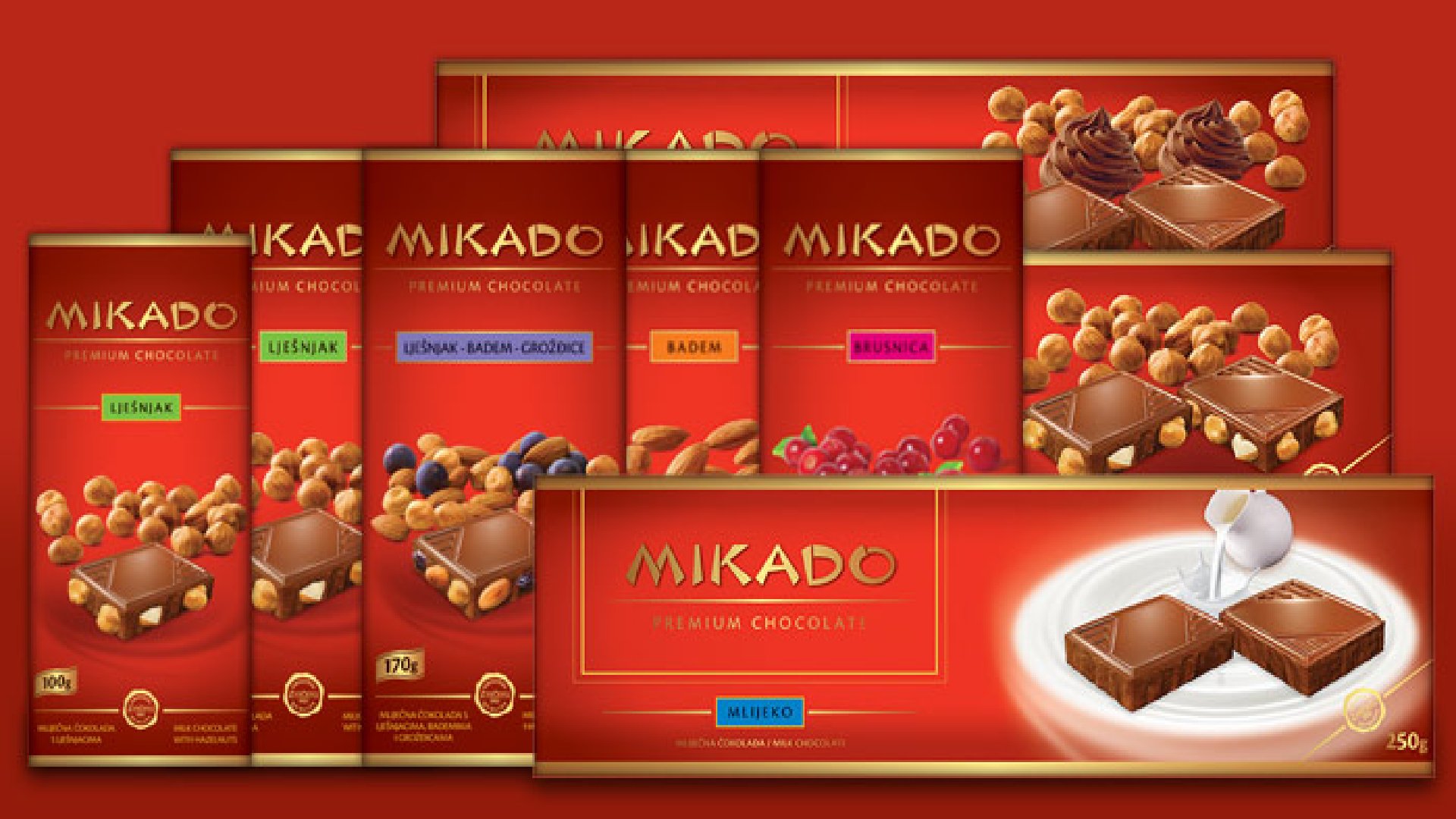 Zvečevo's Mikado range. With Mikado, the Požega-based manufacturers were the first in the world to combine rice and chocolate © Zvečevo
Zvečevo's Mikado range. With Mikado, the Požega-based manufacturers were the first in the world to combine rice and chocolate © Zvečevo
Standard Croatian chocolate available on the high street can be a surprise to visitors. It has a higher content of the cheaper ingredient (sugar) than the more expensive ingredient (cacao) than many chocolates made in more westerly European countries. But, that's the way Croatians seem to like their chocolate. Well, most of them. According to a survey conducted in 2017 by the Hendal agency and JaTRGOVAC magazine, 63.5% of asked Croatians said they choose domestic chocolate products above the 36.5% who more often buy foreign chocolate products. © Nawal Escape
© Nawal Escape
Data from the Central Bureau of Statistics state that in 2018 the country produced 18,799 tons of Croatian chocolate and cocoa products. Over 800 million kuna's worth of Croatian chocolate was exported in the same year. The bond between Croats and their Croatian chocolate is strong, the love heartfelt. It is no doubt this affection for confection that has prompted some of the third of Croats who go in search of foreign alternatives, for the introduction of premium chocolate ranges by the aforementioned big manufacturers of Croatian chocolate and for the rapid increase in artisan and handmade Croatian chocolatiers over recent years.
Croatian chocolate smaller and artisan producers
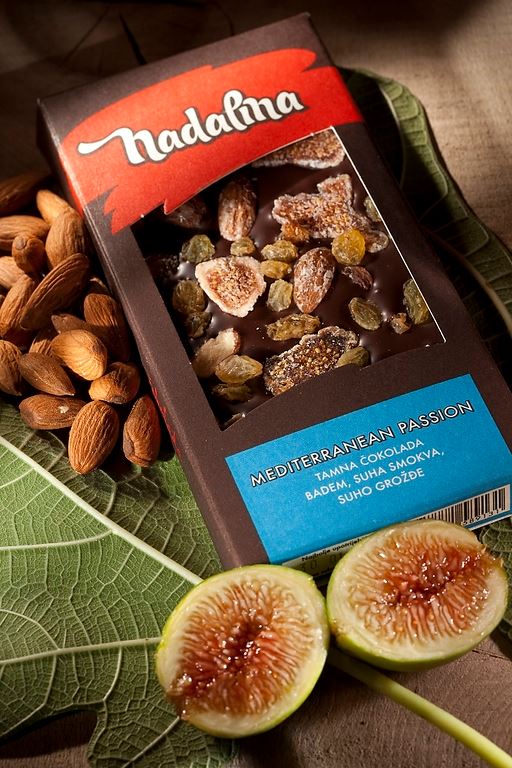
Split-based Nadalina have become increasingly recognised over recent years © Nadalina
Split-based Nadalina make high-quality raw chocolate bars with non-standard flavours like rosemary, figs and olive oil. They held the Guinness World Record for making the world’s largest chocolate bar and in 2017 were voted the world's third-best at the International Chocolate Awards. Vilma slastice from the island of Rab combine dark chocolate with flavours like Pag cheese, white truffles and lavender. Salt manufacturers Solana Nin have a salt-infused chocolate and Zagreb's Chozen make impossibly-pretty handmade Croatian chocolate pralines with a surprising and adventurous range of flavours. Besides these, the list of small manufacturers of Croatian chocolate grows every year. It seems that the love affair between Croats and their chocolate is far from finished, and that's certainly good news for Croatian exports.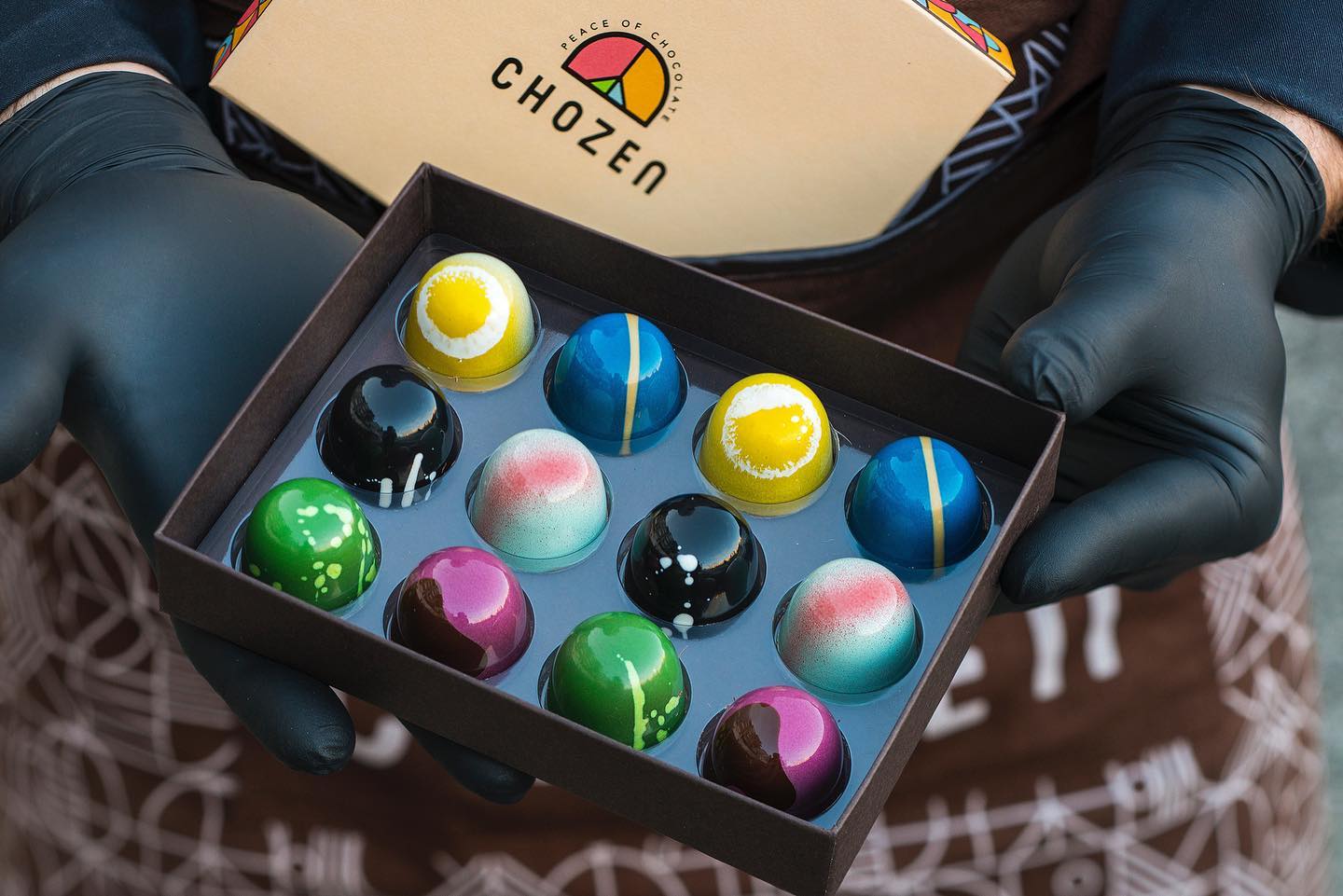 Impossibly pretty handmade chocolate truffles, produced in Zagreb by Chozen © Chozen
Impossibly pretty handmade chocolate truffles, produced in Zagreb by Chozen © Chozen
For the latest travel info, bookmark our main travel info article, which is updated daily.
Read the Croatian Travel Update in your language - now available in 24 languages
Kras Confectionery Sees Higher H1 Profit Despite Drop in Revenues
ZAGREB, July 22, 2020 - Despite a drop in revenues due to the global coronavirus pandemic and economic lockdown, the Kras confectionery group generated a net profit of HRK 13.4 million in the first half of 2020, which is an increase of 15% on the same period of 2019.
Revenues reached HRK 453.1 million, down by 2.6% compared with the first half of last year, the company's financial statement showed on Wednesday.
Sales revenues fell by 6.6% to HRK 427.3 million, of which HRK 225.7 million was generated on the domestic market and HRK 201.6 million on the foreign markets.
Expenditures were nearly 3% lower than last year, totalling HRK 438 million.
The gross profit was HRK 15.1 million, or 8% more than at the same time last year, while the net profit reached HRK 13.4 million.
(€1 = HRK 7.527586)
MI Braća Pivac Buys Kraš ESOP Shares, Holds Controlling Stock
ZAGREB, November 23, 2019 - The Braća Pivac meat industry (Pivac Brothers Meat Industry) and the Kraš-ESOP (Employee Stock Ownership Plan) on Saturday concluded a sales agreement on the transfer of ESOP shares in the largest Croatian manufacturer of confectionery products to the Braća Pivac, the Zagreb-based Kraš stated today.
Under the agreement. MI Braća Pivac company purchased 276,441 ordinary shares, that is 18.44% interest, from Kraš small shareholder, at the price of 861.20 kuna per share or 238.1 million kuna for the whole transaction.
The price corresponds to the weighted average price of the Kraš share on the Zagreb Stock Exchange (ZSE) in the last three months.
The deal was achieved after the Kraš ESOP held a general assembly on Saturday morning when it instructed the management on negotiations with potential buyers.
Apart from the agreement on the shares transaction, also an agreement on social partnership between the Braća Pivac company, Kraš workers and the trade union of workers in agricultural and food producing industries (PPDIV) was concluded defining the obligations of MI Braća Pivac for further investments in Kraš, protection of the rights of the Kraš employees and the maintenance of the existing production plants at the same locations.
MI Braća Pivac management board chair Ivica Pivac was quoted as saying that the group sees Kraš as one of the up-and-coming producing companies in Croatia and that the new owner would like to advance the production of this sweets manufacturer.
He said that he was glad that workers recognised the Pivac group as a steady partner for Kraš.
Today's acquisition makes the Pivac group one of the biggest food producing companies in southeast Europe and some 5,000 employees are on its payroll.
More news about Kraš can be found in the Business section.
Kraš-ESOP Assembly Votes against Deal with Braća Pivac
ZAGREB, September 30, 2019 - The assembly of Kraš-ESOP - the Employee Stock Ownership Plan at the Kraš confectioner - on Monday voted against an agreement for joint action with the Braća Pivac meat industry group, Zrinka Vrhovski of Kraš-ESOP said.
The decision was made following a debate and it was concluded that the reason to vote against the proposal for joint action with Braća Pivac was that Kraš-ESOP may not be able to ensure a sustainable financial scheme for the joint takeover of Kraš, Vrhovski said.
She noted that the only reason why the Employee Stock Ownership Plan was established was to preserve the right of workers to participate as shareholders in the confectioner's ownership structure.
That is a way of protecting jobs, non-tangible and other workers' rights. It promotes social dialogue within the company and motivates Kraš workers to achieve better results and to further develop the company, Kraš-ESOP said on Monday.
Following announcements of a possible takeover of Kraš, its shares were the most traded on the Zagreb Stock Exchange last week, closing at a price of 1,000 kuna per share, up 17.65%.
The company's shares have been in focus since September 9 when the largest shareholder, the Braća Pivac meat industry company, announced its intention to take over Kraš.
Last week the Kappa Star Limited, an investment company owned by Serbian businessman Nebojša Šaranović, continued increasing its stake in Kraš, passing the threshold of more than 16%.
More news about Kraš can be found in the Business section.
KappaStar Continuing to Buy into Kraš Confectioner - Crosses 10% Threshold
ZAGREB, September 24, 2019 - The Cyprus-based KappaStar Group, an investment company owned by Serbian businessman Nebojša Saranović, is continuing to increase its stake in Croatia's Kraš confectioner, saying on Tuesday that it has passed the threshold of 10% and now owns 12.45% of Kraš shares.
KappaStar reported that it now holds 186,653 shares in Kraš or 12.455%.
KappaStar started buying into Kraš on 9 September when the largest individual shareholder in Kraš, the Braća Pivac meat industry, announced its intention to take over Kraš.
Since then Saranović's KappaStar Ltd has actually bought the most shares and last week it reported that it had acquired more than 5% of voting rights in Kraš and now it has crossed the 10% threshold.
Media, however, have reported that other investors appear to be interested in buying Kraš shares as well. Data provided by the Central Depository and Clearing Company (SKDD) on the top ten shareholders in Kraš show that there are two other custodial accounts at Zagrebačka Banka, one with 1.89% of Kraš shares and the other with 0.40% of shares.
Interest in Kraš shares became obvious two weeks ago when the Braća Pivac meat industry, which has a 30.73% stake in Kraš, announced that it would take over the confectioner.
On 9 September Braća Pivac announced its plan to take over Kraš' shares and said that it had opened negotiations with the Kraš-ESOP with the aim of jointly taking over Kraš.
Kraš is known for its Employee Stock Ownership Plan or Kraš ESOP, which holds 18.45% of the shares in the company. Kraš ESOP will decide on the joint acquisition with Braća Pivac at its general assembly on September 30.
More news about Kraš can be found in the Business section.


